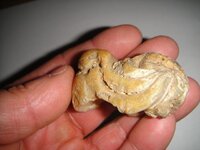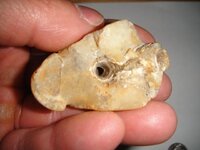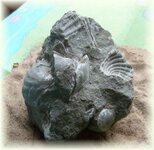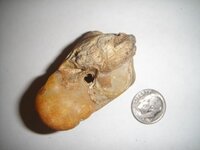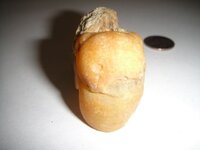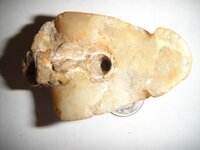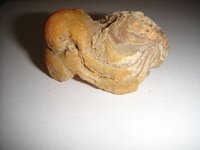unclemac
Gold Member
- Oct 12, 2011
- 7,228
- 7,335
- Primary Interest:
- Beach & Shallow Water Hunting
The material is agate, the hole through it has some of the original shell still attached to it. It comes from a beach where I have found other agate fossils of clams, snails, twigs etc. that date to about 80 million years ago....but for the life of me I just can't figure out what it is, (other than the obvious).


